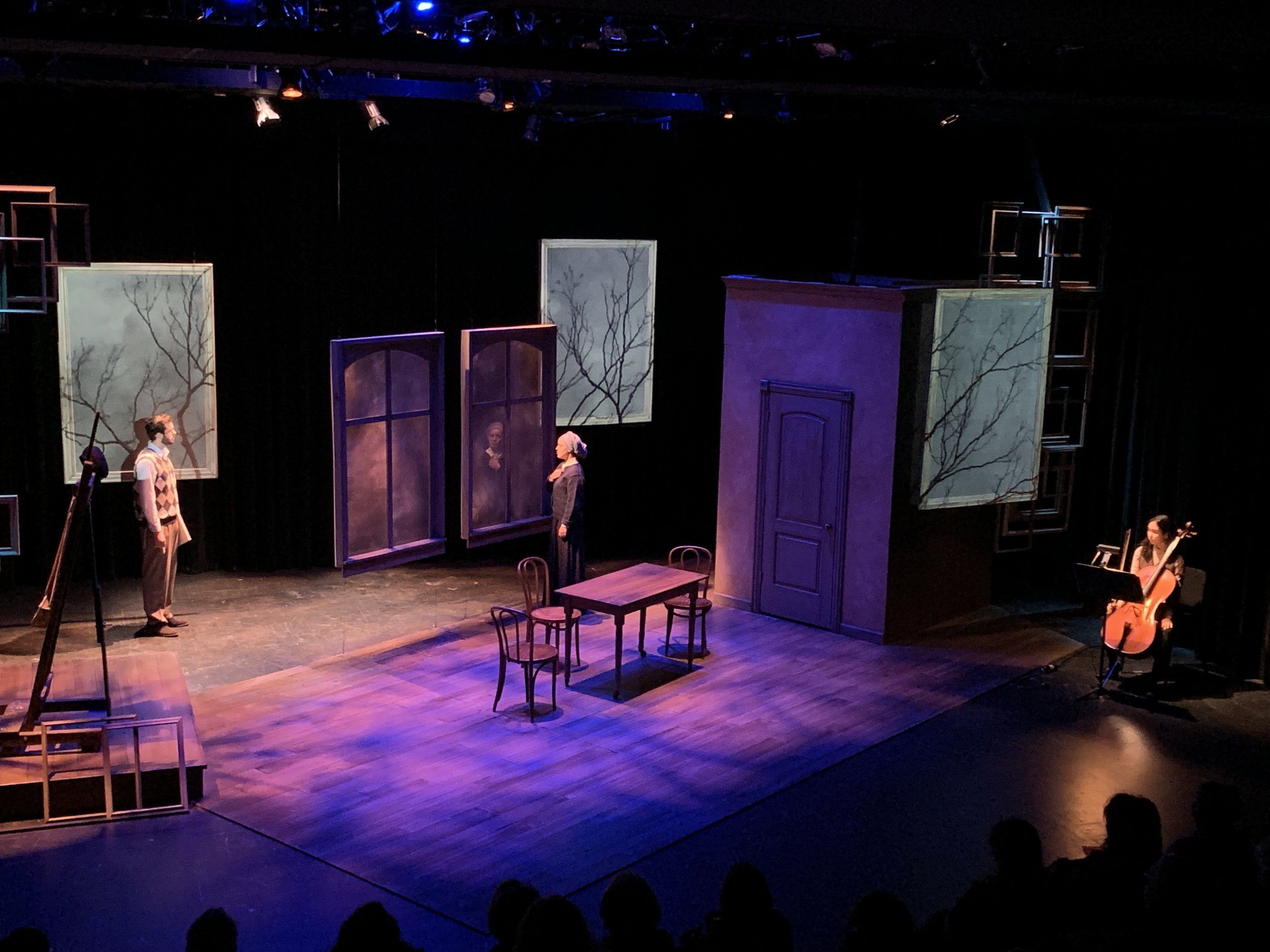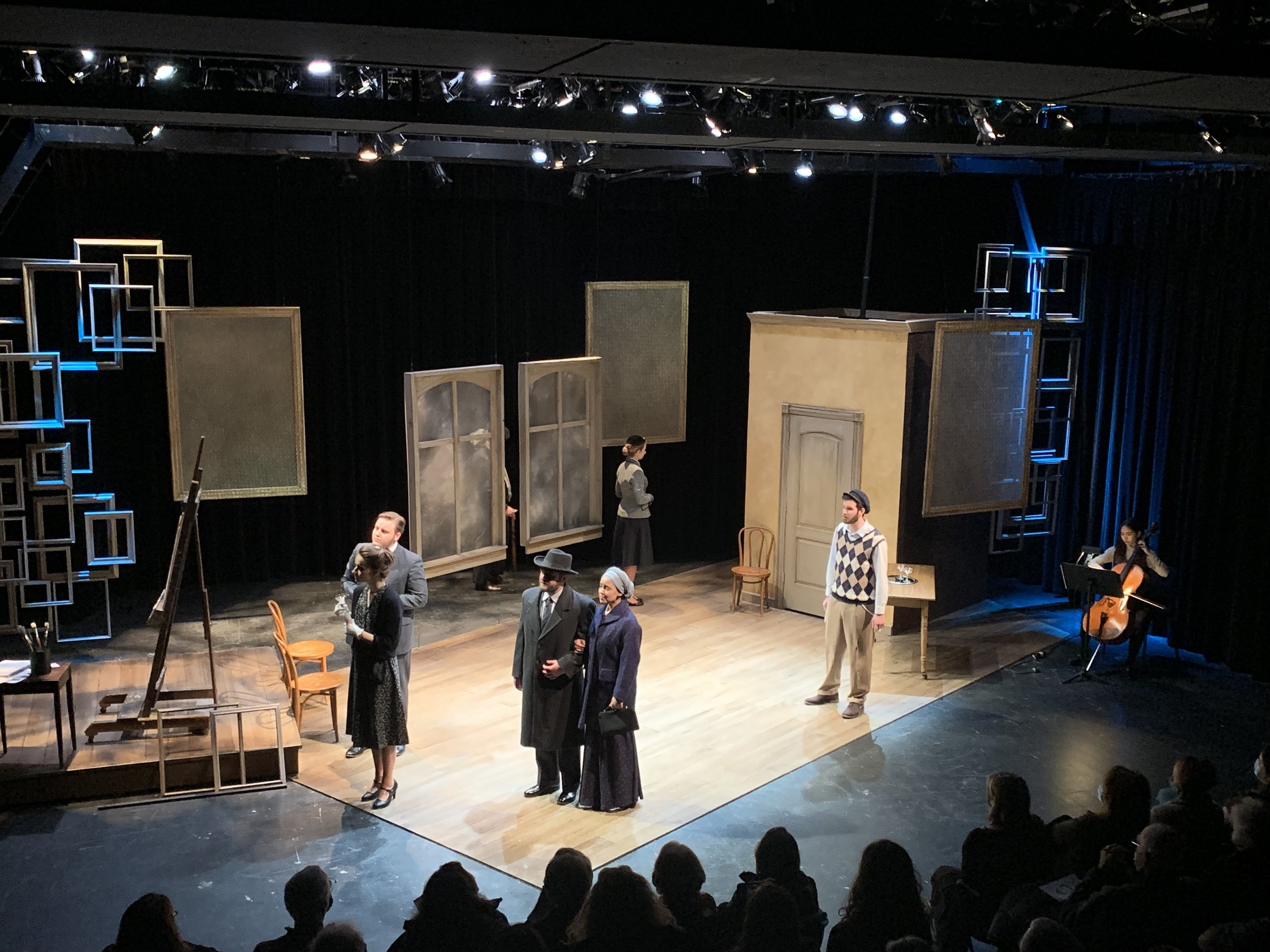











my name is asher lev - November 2021
Thoughts on the play…
“I began not only to look, but to see…to truly see!”
What is this realization of truly seeing? In order to see, one must choose to look. The act of looking is a choice – it is volitional. This sensibility is one of the most essential attributes of an artist. It is also one of the most important qualities of being truly human. The artist helps us to see what we thought we knew as though we had never seen it before.
In the fast paced, supercharged, turned on and tuned up lives we live, it is much easier to keep our blinders well in place – looking neither to the left nor to the right. Looking straight ahead, one moves forward without any clear sense of where they are – only where it appears they are going. They lose a context for the journey and any real sense who may be traveling with them. Noticing is one of the most important things I teach. Noticing is an essential skill for the artist in our world today. In doing so, the artist’s role is to help us see ourselves more clearly, to experience life more deeply, to embrace our fellow travelers with a compassion that can only come from noticing that we are not alone on this journey. Noticing must become an everyday practice.
Art, and for me- theater, is a way of knowing. It comes from a curiosity, a needing to know and to understand more keenly. It is a way of interrogating the culture in which we live - of holding a mirror up to our experience. Artist, Anne Hamilton, suggests that one does not arrive by necessarily knowing where one is going. “In every work of art something appears that does not previously exist, and so, by default, you work from what you know to what you don’t know.”
The artist does not make art isolated in her own studio or practice room. As she notices, she must respond to what she sees. The artist must seek to see life as it is, not as he might like it to be. This response takes us beneath a superficial pretty, to a deeper sense of beauty. Beauty is experienced as one encounters truth. The beautiful is not always pretty. The quest of the artist is to create moments of truth, of beauty. One resonates with this sense of truth deep in the soul, the seat of knowing. To do so, the audience is invited to engage, to participate, not just casually observe an action.
How does one do this and still remain a responsible citizen in the community? What does it mean to be a responsible artist in a community of faith? This is the key question of the play. Asher wrestles with how to honestly respond to a world that “is not pretty”, when his mother urges him to simply paint the pretty flowers and birds. “You should make the world pretty, my Asher. You should make it better.”
Asher is pulled between the world of his faith and the expectations set upon him by his mentor, the artist, Jacob Kahn. “Do not lie – do you know what that responsibility is?” Kahn emphatically states that an artist’s responsibility is to his art alone. The Rebbe dictates that “a life is measured by how it is lived for the sake of heaven.” Is it possible for Asher Lev to balance these expectations? As Asher suggests at the end of the play – there is no easy answer. The easy answers are perhaps not worth living. Seeking truth must resonate in the pursuit of both of these dictates and finding a way to live in that tension.
It reminds us of all the possibilities. And so we say – “Ah, yes!”
What If…?
